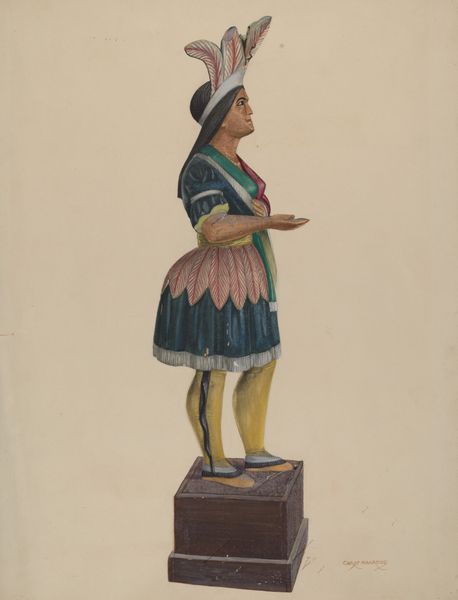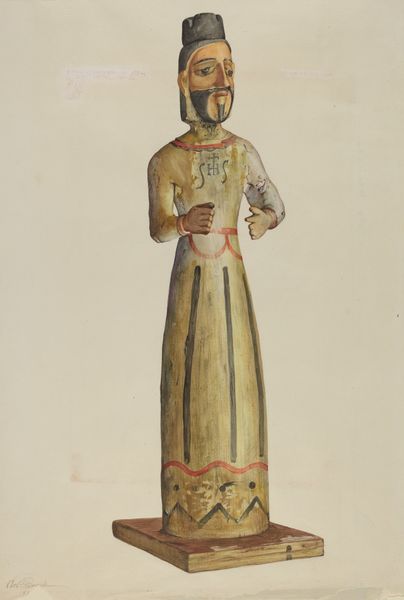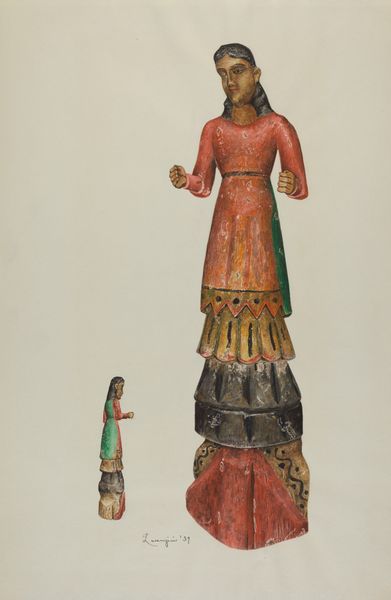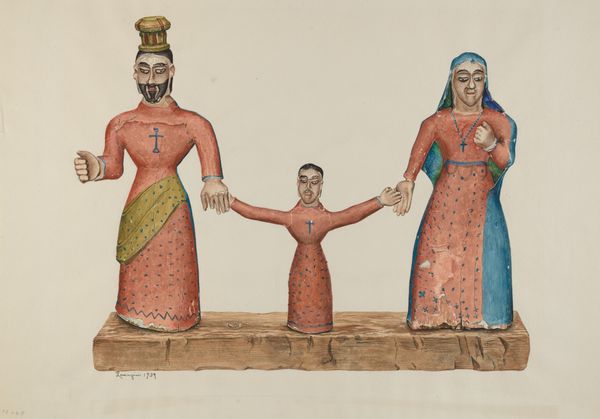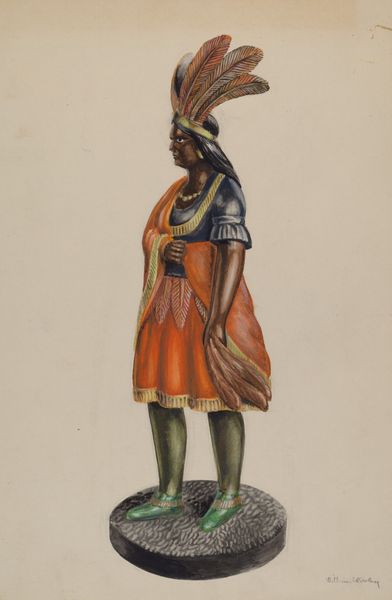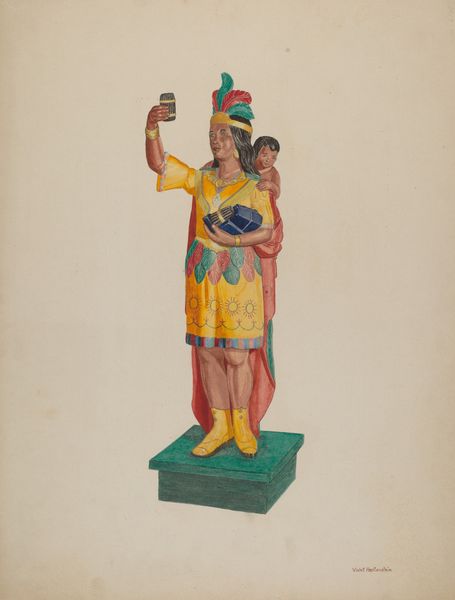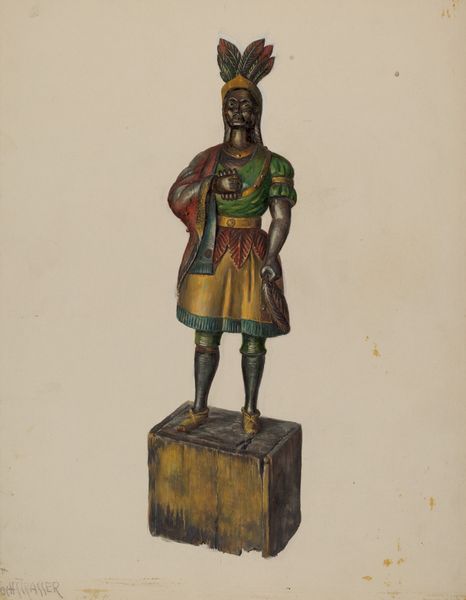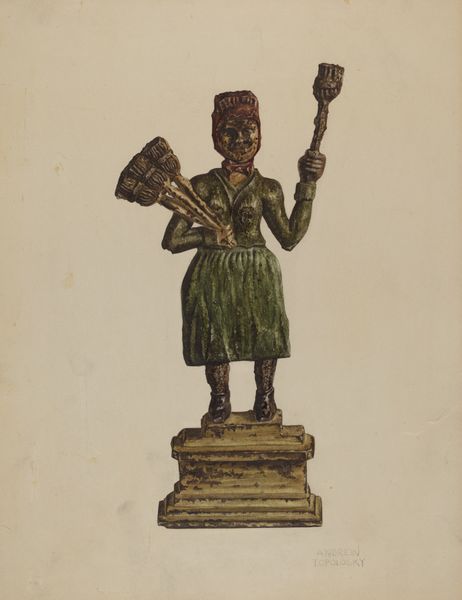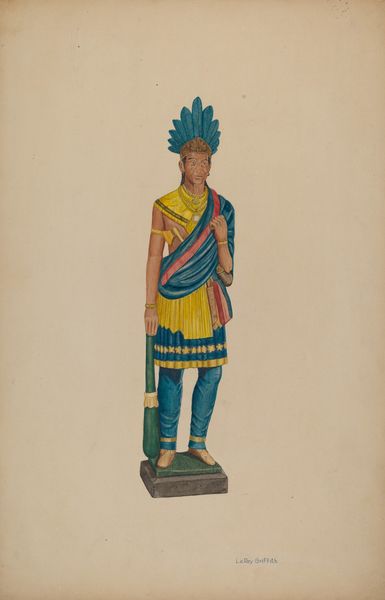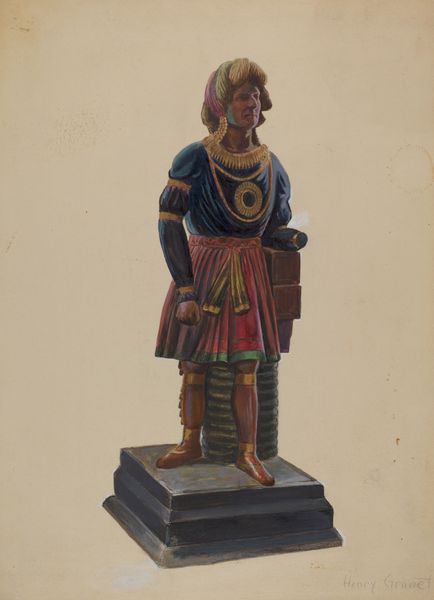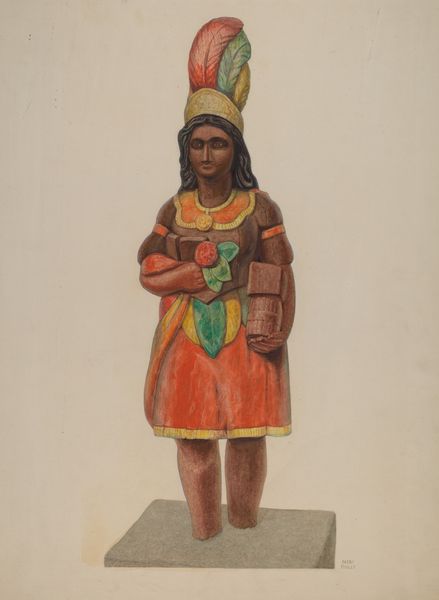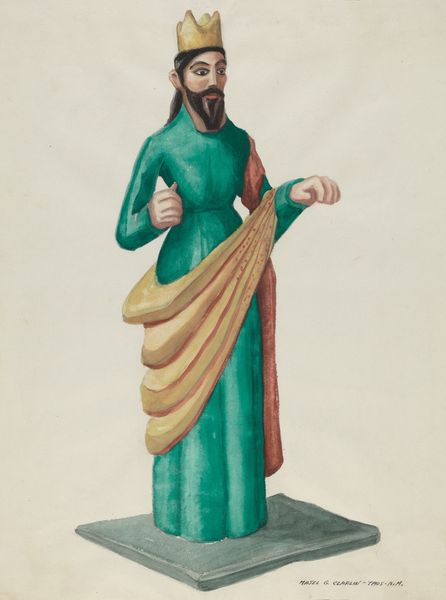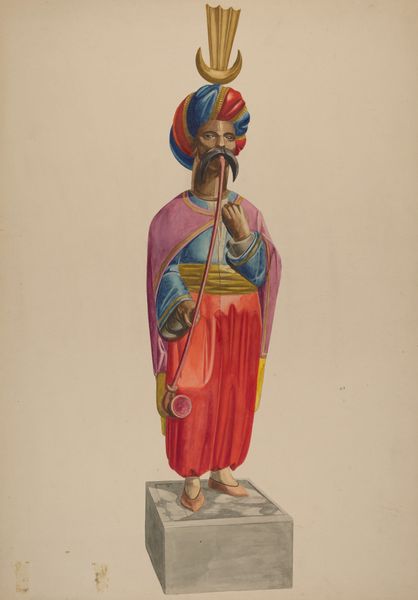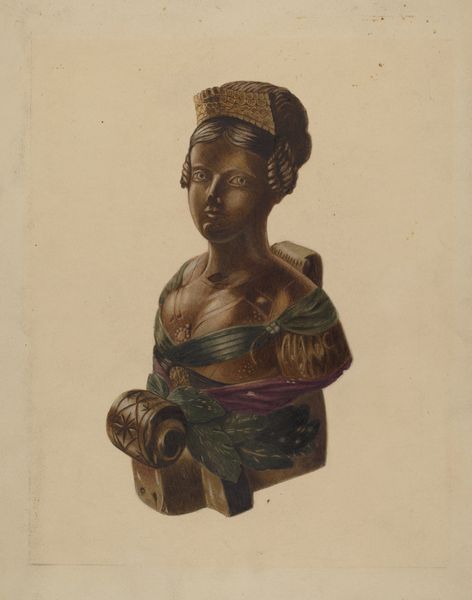
drawing, watercolor
#
drawing
#
figuration
#
watercolor
#
folk-art
#
watercolour illustration
#
portrait art
Dimensions: overall: 36.6 x 28.9 cm (14 7/16 x 11 3/8 in.) Original IAD Object: Approximately 15"high
Copyright: National Gallery of Art: CC0 1.0
Curator: Majel G. Claflin painted "San Jose, Carved and Painted Wooden Santo" around 1937, rendering this sculpture in watercolor. What strikes you first about it? Editor: It’s the starkness, almost severe, despite the soft medium. There's a compelling contrast between the figure's stoic stance and the gentle washes of watercolor. I immediately wonder about the materials. Curator: Good point. The painting depicts a santo, a carved wooden figure often of a saint, common in New Mexico's religious folk art tradition. Claflin likely encountered this object in her travels and wanted to record its presence and character. How might this inform our reading of it? Editor: Knowing it’s a santo changes things. These objects aren't just decorative; they embody faith and communal identity. The artist documents a crafted artifact, but how much are we considering labor in the act of creation here? We should question what kind of work has shaped its production and the meaning inherent in this labor. Curator: Indeed, we need to think about the intersection between labor and art, how the figure could carry narratives related to gender and societal power, given this type of Catholic iconography often served to reinforce social norms of the era, influencing women’s roles. Editor: Precisely! And beyond those iconographic implications, consider how the actual carving—the work of hands—endows the sculpture with its power. What's lost, or gained, by representing it in watercolor? A discussion should question how these choices can potentially challenge or reframe craft production, religion and artistry. Curator: Perhaps it transforms it into a study, documenting material culture as a signifier of identity. Editor: Right. The act of illustrating, a translation from 3D carving to 2D painting. Highlighting production, documenting representation, it’s another way to approach meaning. Curator: It's been insightful to explore how social context, material conditions, and even gender affect our appreciation for such cultural objects. Editor: Yes, revealing how the intersections between social norms and modes of production ultimately form meaning.
Comments
No comments
Be the first to comment and join the conversation on the ultimate creative platform.
